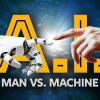
Breaking News
 Elon Tells Rogan the Real Reason Democrats are Prolonging the Government Shutdown [WATCH]
Elon Tells Rogan the Real Reason Democrats are Prolonging the Government Shutdown [WATCH]
 Newsom: Trump Is Trying to Rig the Election -- He Knows GOP Will Lose
Newsom: Trump Is Trying to Rig the Election -- He Knows GOP Will Lose
 There is zero justification for the Department of Justice's silence while the most serious...
There is zero justification for the Department of Justice's silence while the most serious...
 Gabbard Says Trump Has Ended America's Era Of 'Regime Change'
Gabbard Says Trump Has Ended America's Era Of 'Regime Change'
Top Tech News
 Graphene Dream Becomes a Reality as Miracle Material Enters Production for Better Chips, Batteries
Graphene Dream Becomes a Reality as Miracle Material Enters Production for Better Chips, Batteries
 Virtual Fencing May Allow Thousands More Cattle to Be Ranched on Land Rather Than in Barns
Virtual Fencing May Allow Thousands More Cattle to Be Ranched on Land Rather Than in Barns
 Prominent Personalities Sign Letter Seeking Ban On 'Development Of Superintelligence'
Prominent Personalities Sign Letter Seeking Ban On 'Development Of Superintelligence'
 Why 'Mirror Life' Is Causing Some Genetic Scientists To Freak Out
Why 'Mirror Life' Is Causing Some Genetic Scientists To Freak Out
 Retina e-paper promises screens 'visually indistinguishable from reality'
Retina e-paper promises screens 'visually indistinguishable from reality'
 Scientists baffled as interstellar visitor appears to reverse thrust before vanishing behind the sun
Scientists baffled as interstellar visitor appears to reverse thrust before vanishing behind the sun
 Future of Satellite of Direct to Cellphone
Future of Satellite of Direct to Cellphone
 Amazon goes nuclear with new modular reactor plant
Amazon goes nuclear with new modular reactor plant
 China Is Making 800-Mile EV Batteries. Here's Why America Can't Have Them
China Is Making 800-Mile EV Batteries. Here's Why America Can't Have Them
Laser Induced Annihilation Reactions Would be a Superior Space Drive

Until now, no technology was known that would be able to give rocket exhaust at relativistic speed and a high enough momentum for relativistic travel. Here, a useful method for relativistic interstellar propulsion is described for the first time. This method gives exhaust at relativistic speeds and is a factor of at least one hundred better than normal fusion due to its increased energy output from the annihilation-like meson formation processes. It uses ordinary hydrogen as fuel so return travel is possible after refueling almost anywhere in space.
The nuclear processes give relativistic particles (kaons, pions and muons) by laser-induced annihilation-like processes in ultra-dense hydrogen H(0). The kinetic energy of the mesons is 1300 times larger than the energy of the laser pulse. This method is superior to the laser-sail method by several orders of magnitude and is suitable for large spaceships.
Researchers are working on an annihilation-like method. It is well studied in the laboratory and gives initially fast kaons and pions from protons or deuterons by annihilation-like processes. They use the phrase annihilation-like since the practical evidence and use is more important for its characterization than the claim inherent in the strict nomenclature without the -like. The necessary antimatter used is concluded to be formed by oscillations of the quasi-neutrons initially formed in the ultra-dense hydrogen by laser-induced processes from spin state s?=?2 to s?=?1. Considerable progress in the understanding of these complex nuclear processes has been made already. Thus, a practical solution exists for the annihilation rocket drive, ejecting relativistic massive particles and not only photons.

 China Innovates: Transforming Sand into Paper
China Innovates: Transforming Sand into Paper

